Unlike many other pets, birds can have varying traits and personalities from breed to breed. Birds come in a lot of sizes and have specialized needs.
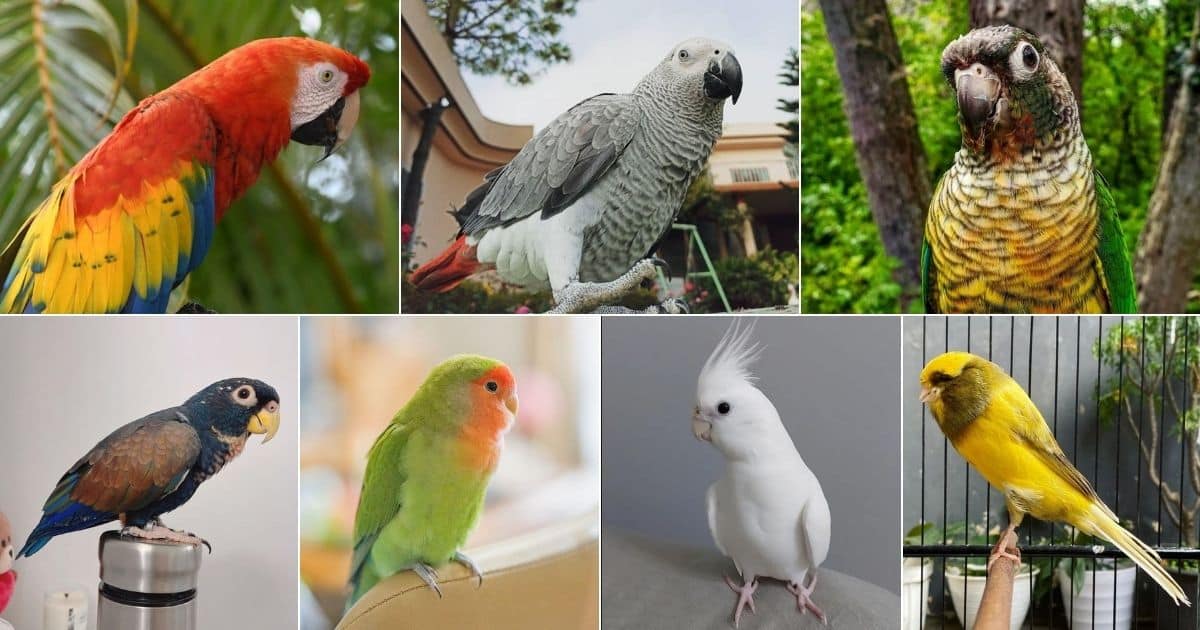
It can be intimidating to determine which bird makes an excellent first choice. Birds tend to live a long time, so it’s important to do your research before you make a commitment. Fortunately, we’re here to break down some different domestic birds so that you can find the easiest bird to train.
Contents
1. Scarlet Macaw
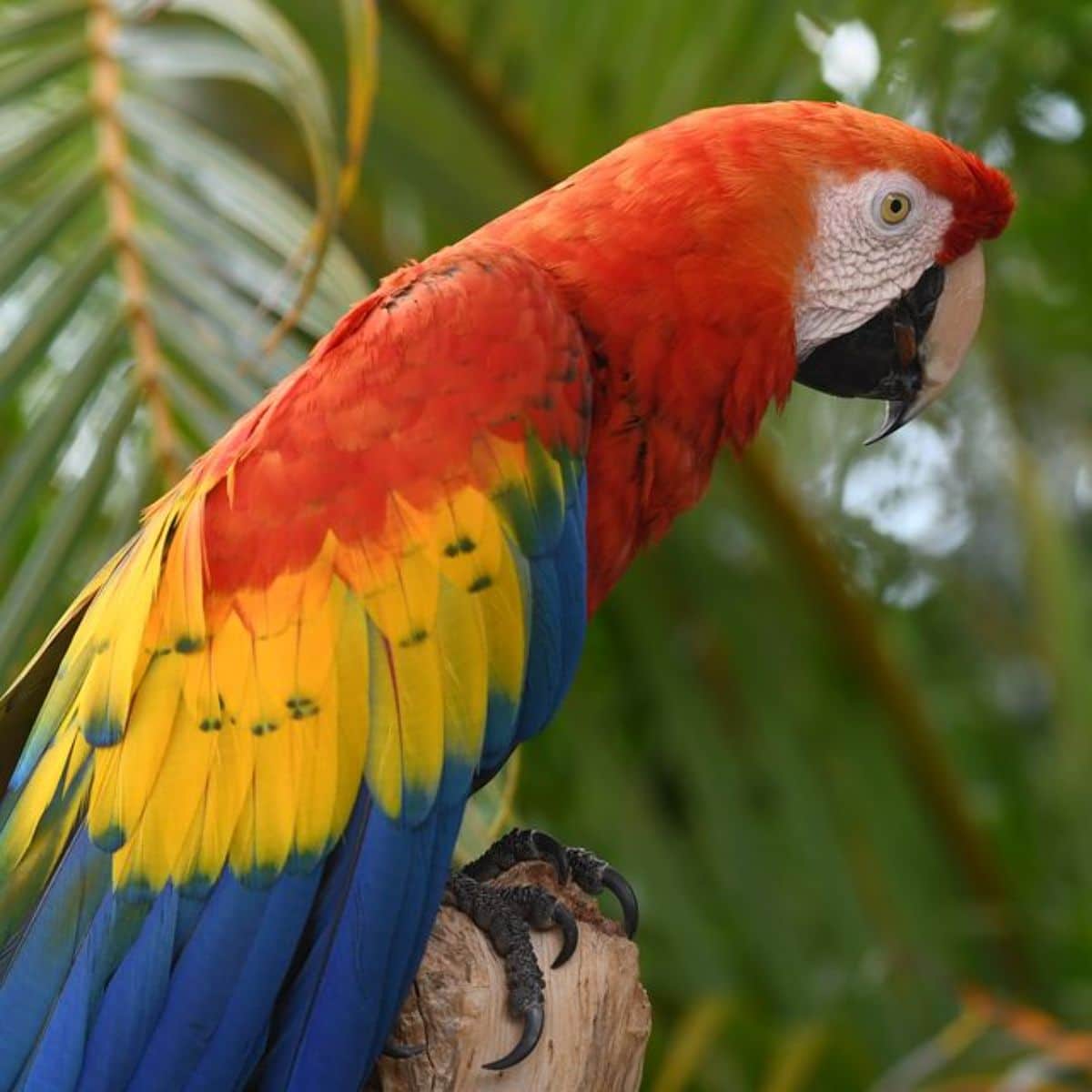
- Scientific name: Ara Macao
- Length: 2.6–3.2ft (79.248–97.536cm)
- Weight: 2.0–2.2lbs (.91–1kg)
- Wingspan: 2.7–3.3 ft (82.3cm–1m)
The scarlet macaw stands out as one of the larger and more unique birds on today’s list. While larger birds tend to be a bit more challenging to train, the scarlet macaw is an exception to that rule.
This crimson beauty uses its abundance of energy to form a strong bond with its human owners. Their tendency to live in flocks means that you are their flockmate and that they will trust and love you quickly. In that context, scarlet macaws have the potential to be an easy birds to train and can be quick to adapt.
2. Monk Parakeet
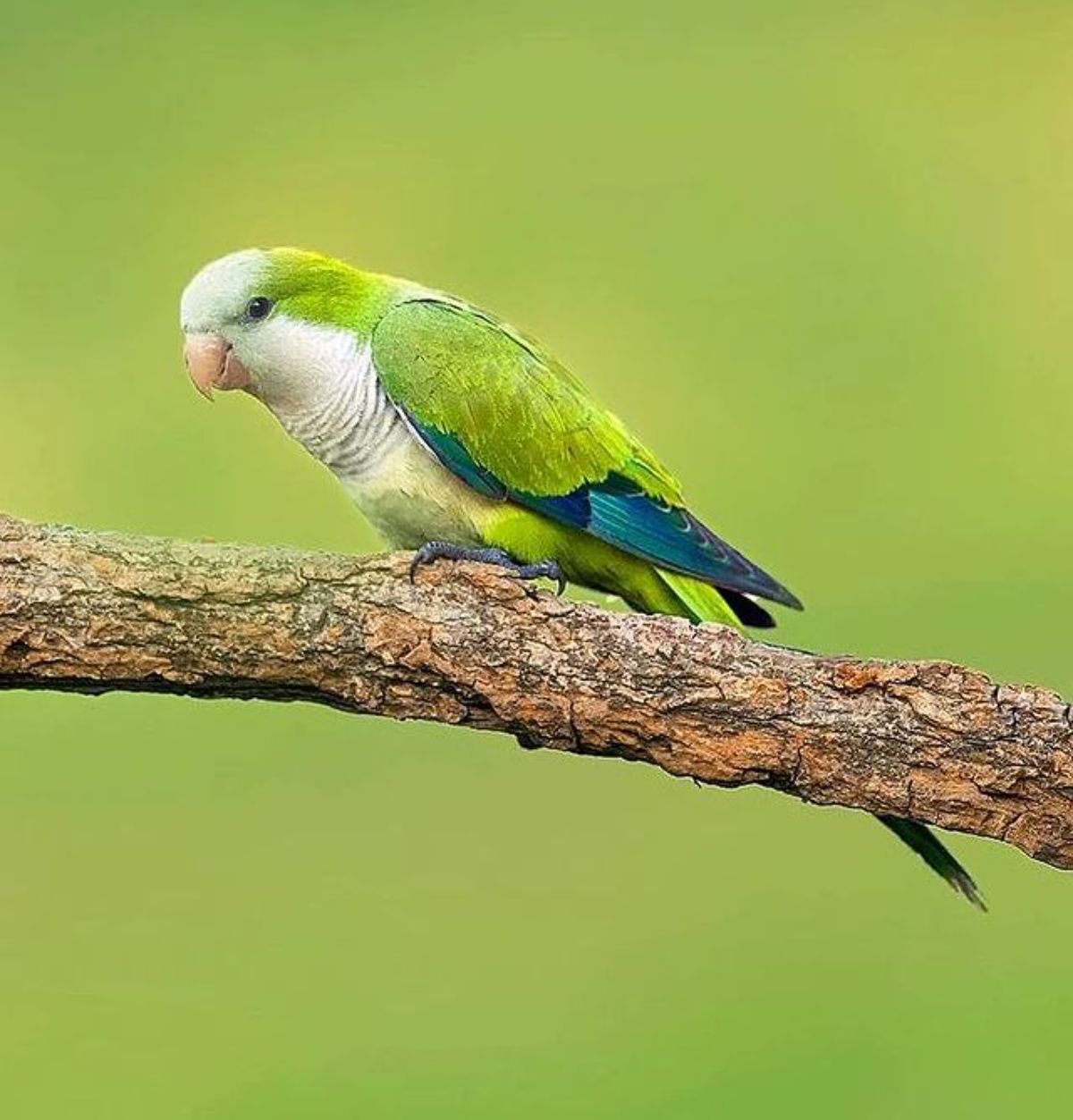
- Scientific name: Myiopsitta Monachus
- Length: 11–12in (28–31cm)
- Weight: 3.5–3.6oz (100–103g)
- Wingspan: 19–19.2in (48.26–48.768cm)
Parakeets often referred to as “budgies,” are likely the most popular birds as pets. They are small, super easy to train, and have a loving nature most pet owners appreciate. These characteristics make them the easiest bird to teach.
Monk parakeets, sometimes called “quaker parrots,” stand out as a parakeet breed because of their size.
Moreover, these birds are fun because they recite speech patterns and can be trained to talk more extensively. Typically only larger birds have this cognitive ability, so finding it in a smaller package can be a unique selling point.
3. Canary
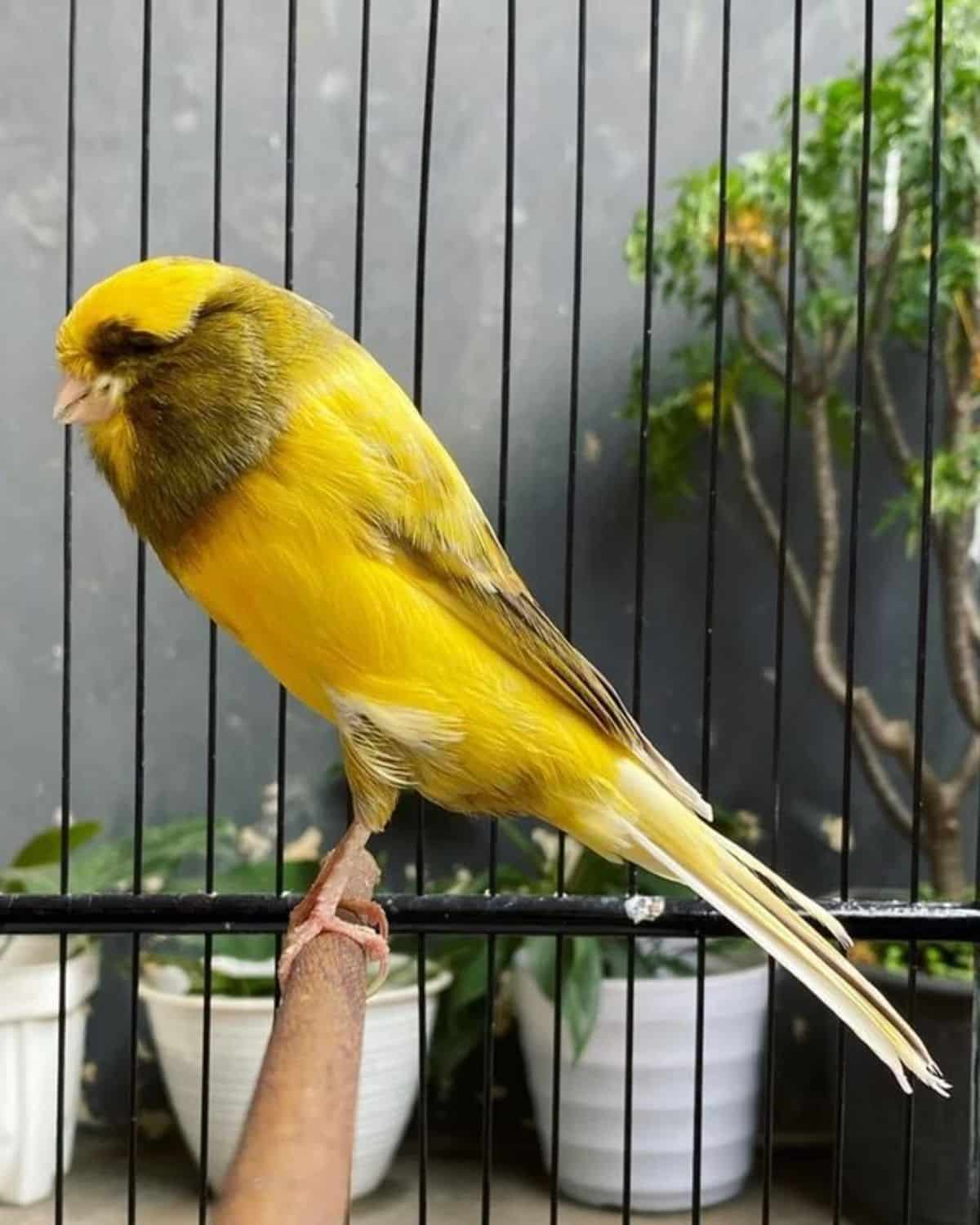
- Scientific name: Serinus canaria domestica
- Length: 4.7–7.9in (11.938–20.066cm)
- Weight: .30–.86oz (8.4–24g)
- Wingspan: 8.3–9.3in (21–23.7cm)
At first glance, canaries might not seem like the easiest bird to train. After all, they tend to be loud and don’t love being handled. That said, canaries efficiently train out of their nervous habits, and their voice has an endearing quality.
Unlike other loud bird breeds, canaries don’t just scream. Instead, they will whistle and sing when happy; many find that habit quirky and charming.
4. Dove
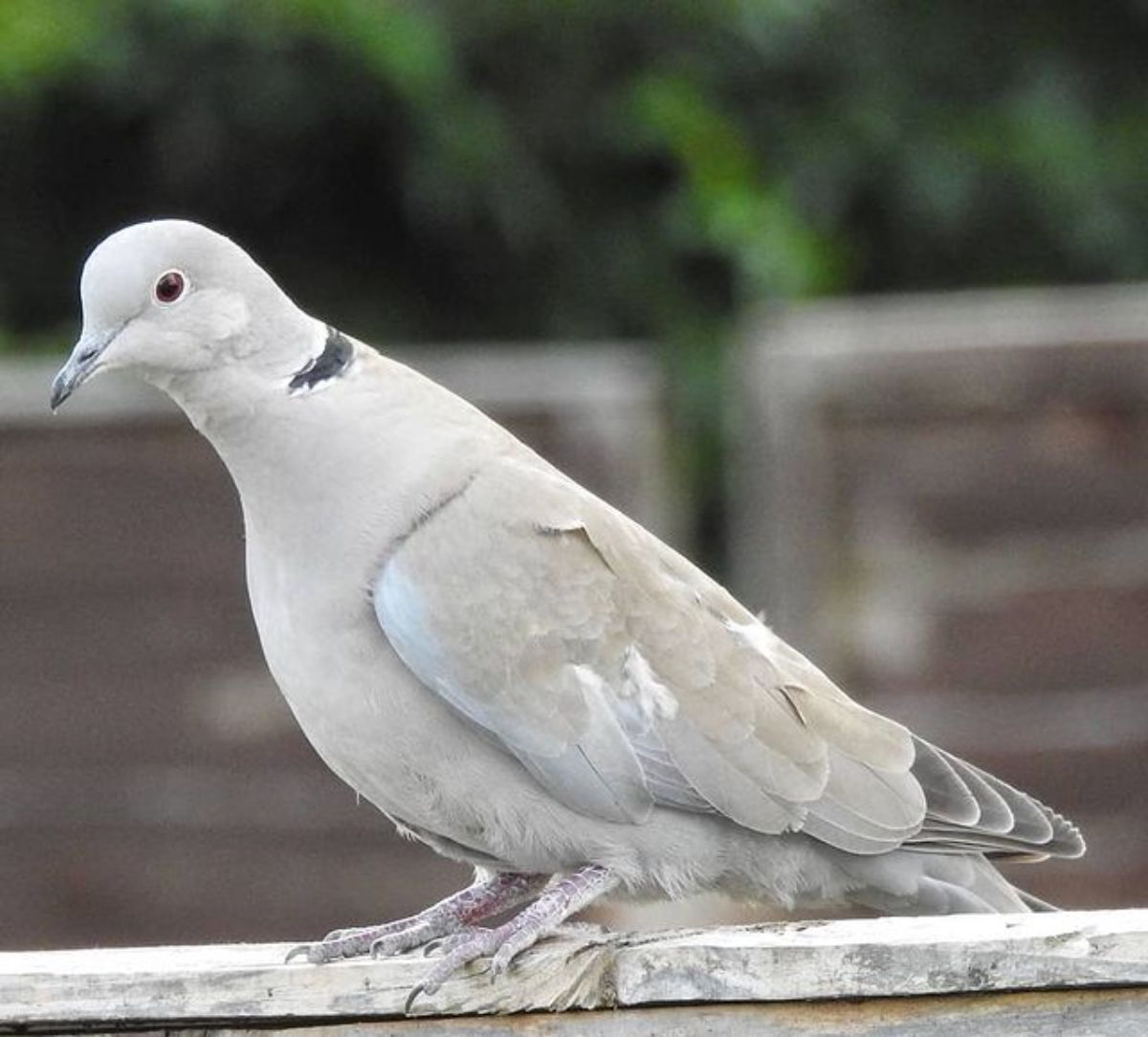
- Scientific name: Columbidae
- Length: 9–13 in (22.86cm–33.02cm)
- Weight: 4–6 oz (113.398g–170.097g)
- Wingspan: 15–18in (38.1cm–45.72cm)
Doves are amongst the easiest domestic birds to manage. These birds are unique because they don’t require the same time commitment other avians ask of their humans. In fact, doves are content to sit for long periods, making them an excellent choice for people with busy schedules.
Do note that doves are a climbing breed, meaning they require a larger cage than other birds of their size. They enjoy being able to climb about and explore in their own time.
5. Lovebird
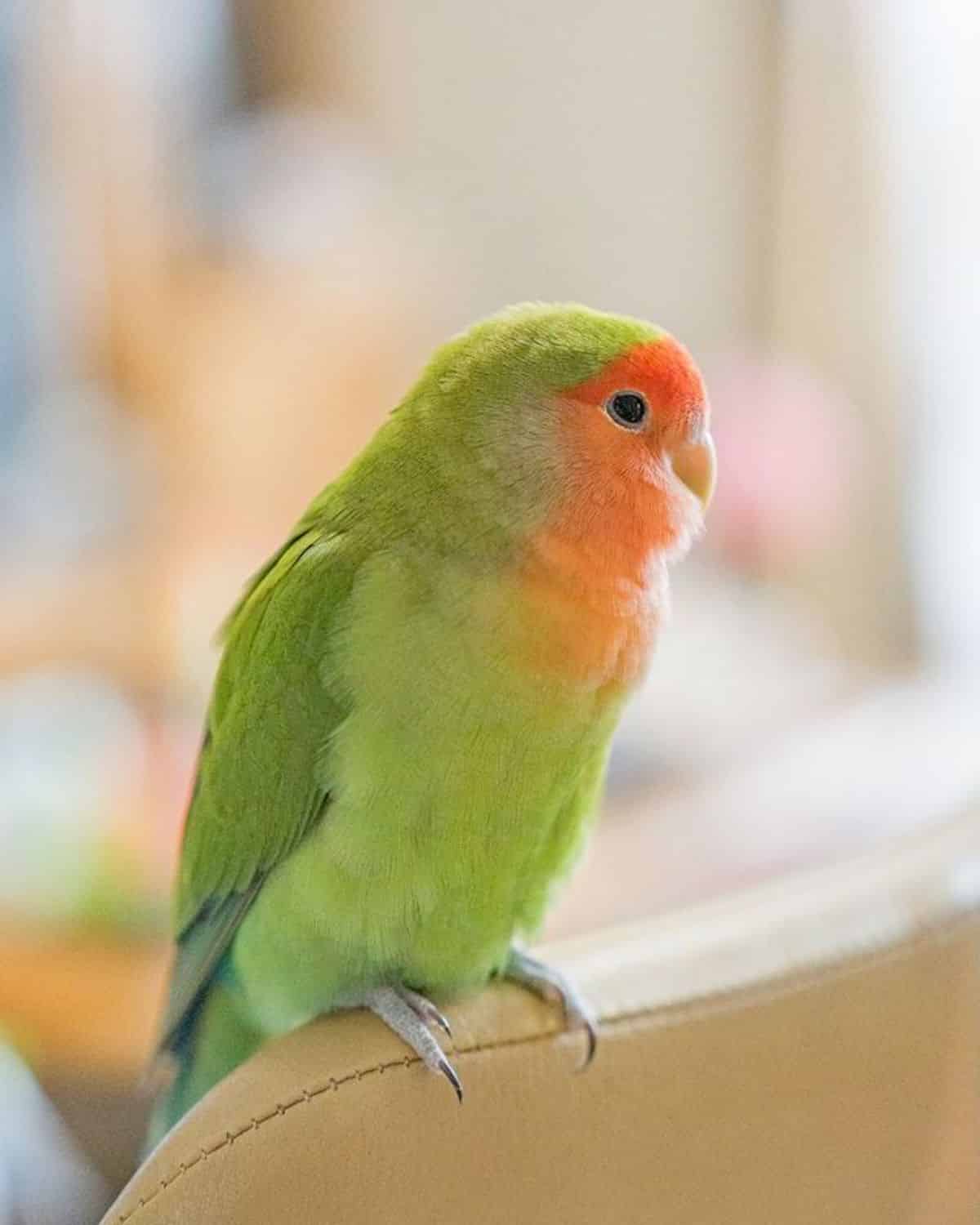
- Scientific name: Agapornis
- Length: 5–6.5in (12.7–16.51cm)
- Weight: 1.5–2oz (40–60g)
- Wingspan: 5–7in (13–17cm)
Lovebirds are the smallest type of domestic parrot. Being so small means that lovebirds do not require as much space as others on this list.
They get their adorable name because of their habit of mating for life. That sweet instinct has two advantages for training.
If you are busy and might not have much time for pets, getting two lovebirds as a pair means the birds will be content with each other and never get too lonely.
Conversely, if you have a lot of time and want an incredibly affectionate bird, getting only one lovebird might be your choice. Lovebirds are quick to attach and form relationships with others, including their owners, when given the opportunity.
6. Cockatiel
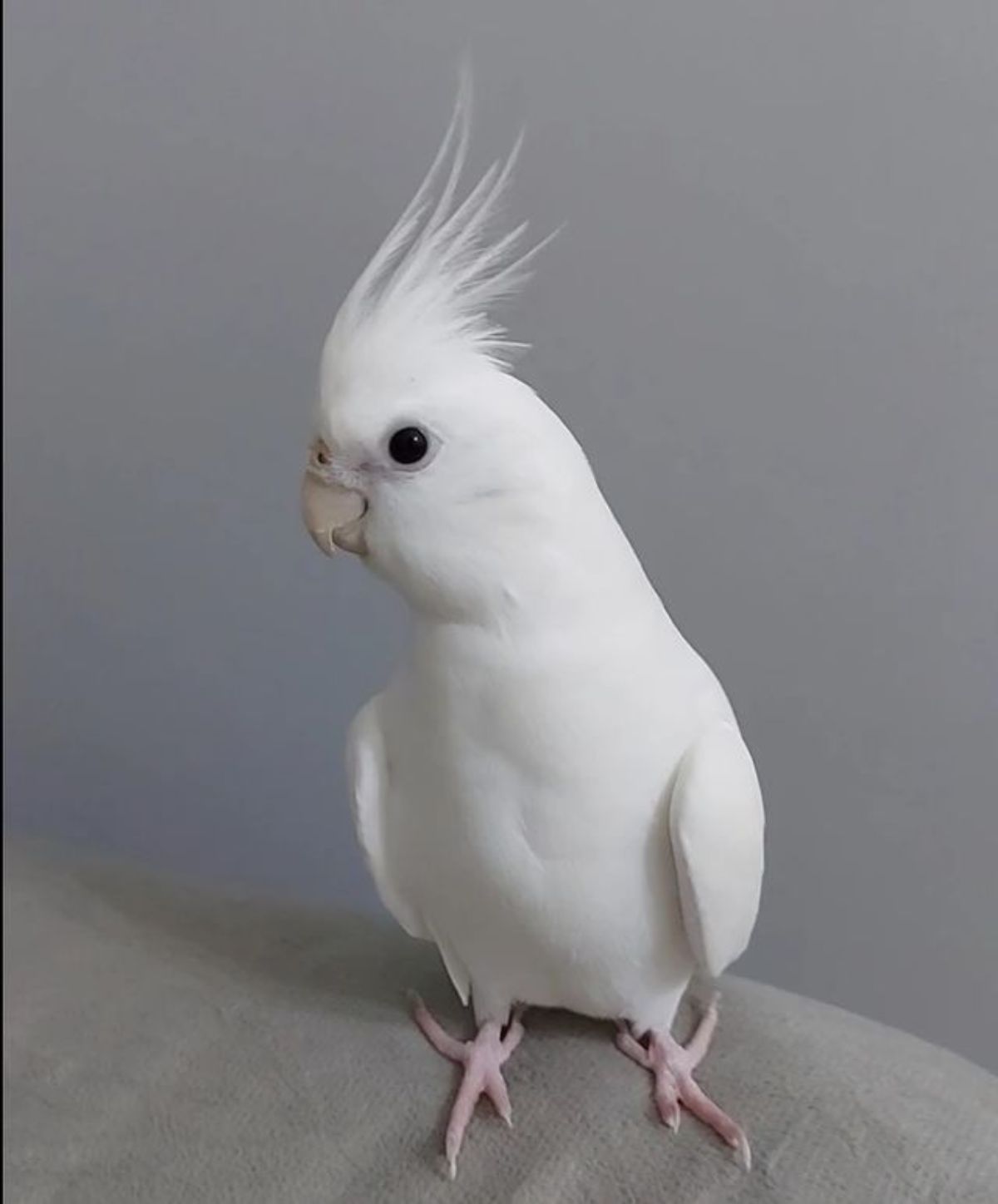
- Scientific name: Nymphicus hollandicus
- Length: 12–14in (30.48–35.56cm)
- Weight: 2.5–4.2oz (70.8738–119.068g)
- Wingspan: 10–12in (25–30cm)
As mentioned at the beginning of this article, cockatiels are the easiest birds to form a bond with. Their loving nature and tendency for affection make even lovebirds look distant.
Cockatiels have emotionally solid tendencies and inquisitive personalities. These traits make them an ideal option for training.
7. African Gray Parrot
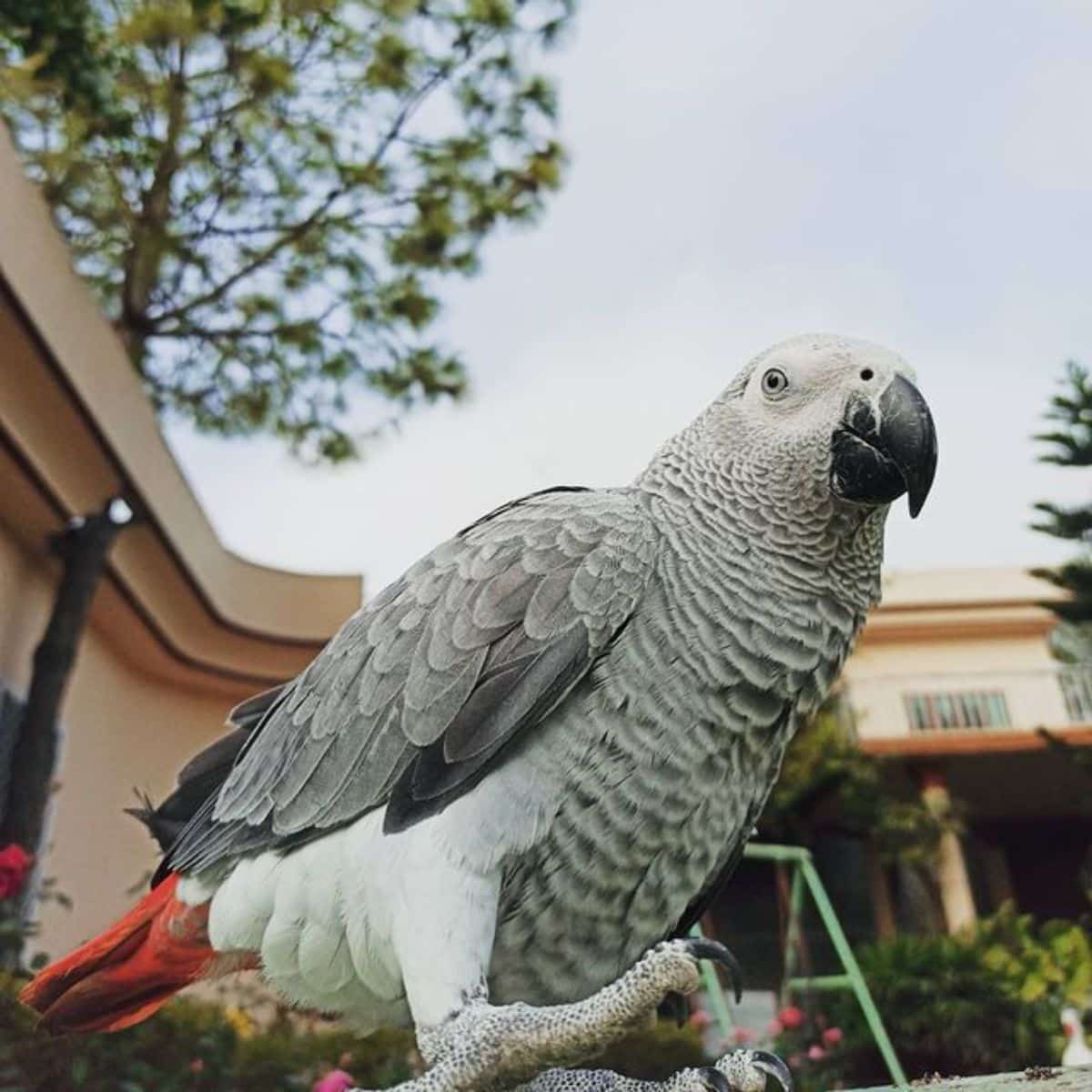
- Scientific name: Psittacus erithacus
- Length: 12–13in (30.48–33cm)
- Weight: 13–14oz (368.544–396.893g)
- Wingspan: 18–20in (45.72–50.8cm)
Although it takes a hot minute, African gray parrots are relatively straightforward birds to train so long as you spend time with them.
African gray parrots are considered by many to be the most intelligent breed of birds in the world. If you spend enough time with the bird, these parrots will quickly start listening to your commands and even get excited to do so.
Unfortunately, they aren’t well-suited for newcomers. While training an African gray parrot is simple, it takes a lot of time and experience. Indeed, it is recommended that these birds be given upwards of five hours of stimulation daily, which is not something everyone has the time for.
8. Green–cheeked Conures
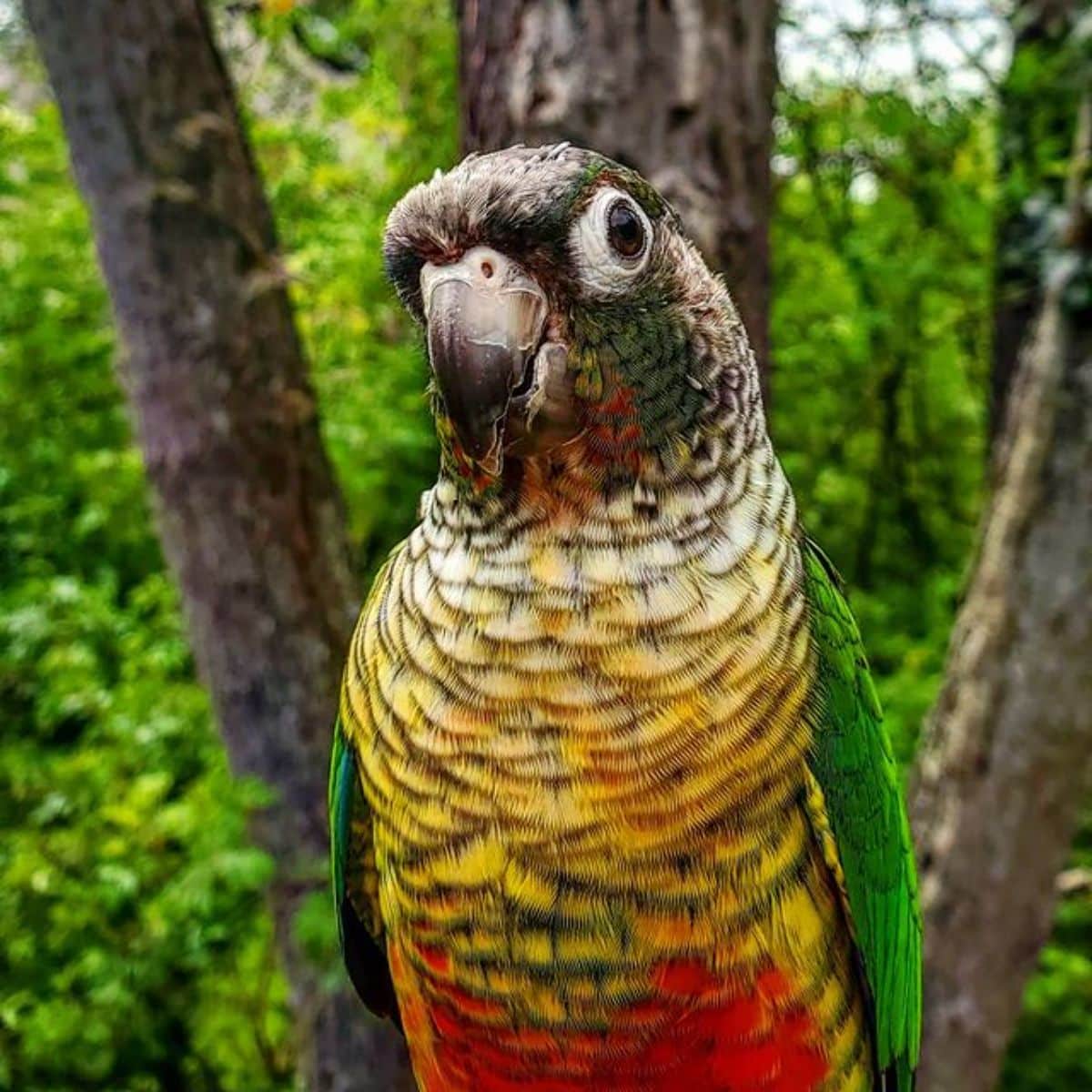
- Scientific name: Pyrrhura molinae
- Length: 11–12in (28–31cm)
- Weight: 2.11644–2.82192oz (60–80g)
- Wingspan: 5–5.5in (12.7–13.97cm)
There isn’t much to say about the green–cheeked conures. Not because they aren’t fascinating but rather because they do not have much to speak for themselves.
Green–cheeked conures are some of the quietest birds you can adopt. These little guys are indeed loving, but they maintain their status as relatively quiet. Green–cheeked conures make great apartment–pets due to their relatively low energy and tameness.
9. Pionus Parrots
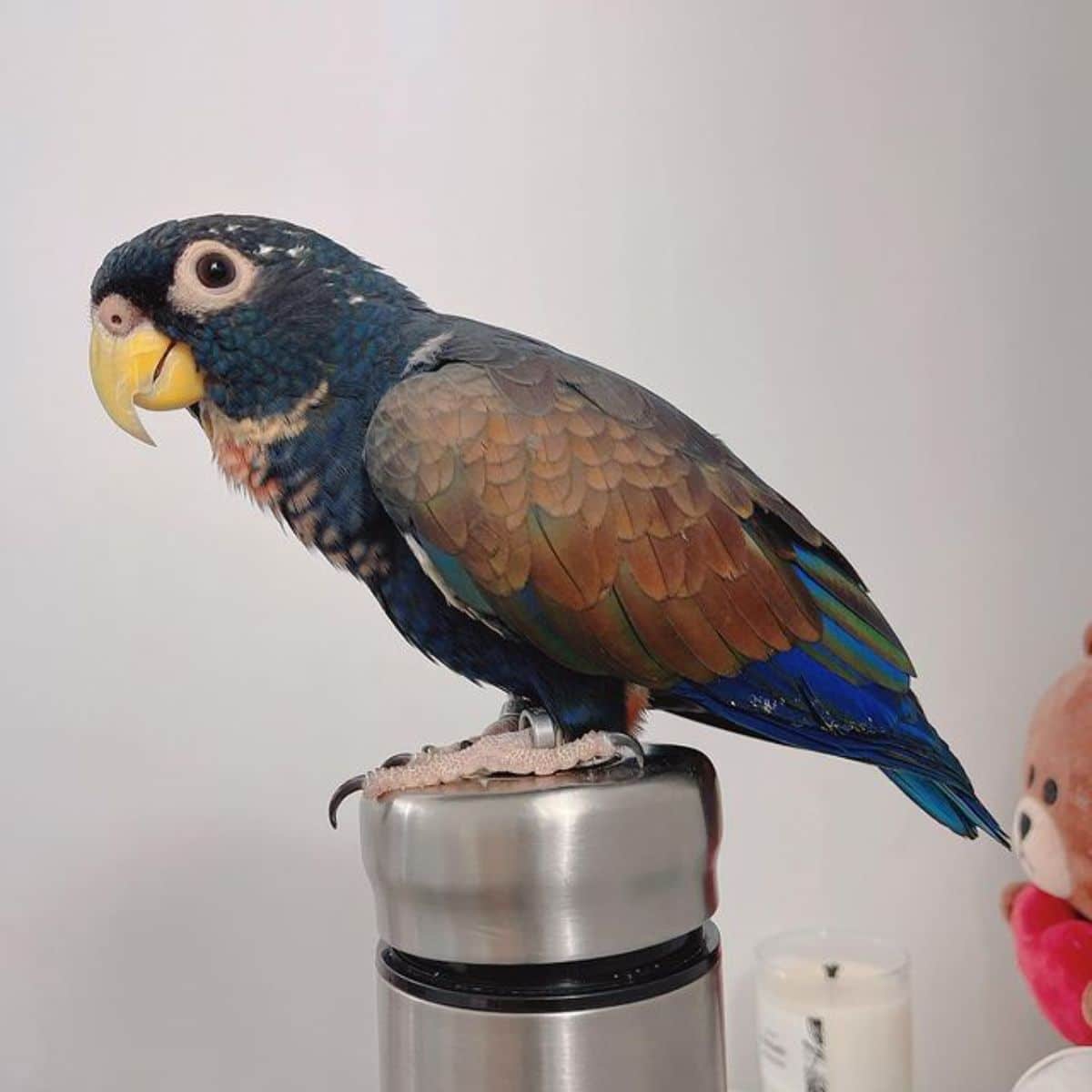
- Scientific name: Pionus menstruus
- Length: 10–12in (25–30cm)
- Weight: 8–9oz (226.796–255.146g)
- Wingspan: 10.6299–11.4173in (27–29cm)
Last but not least, we have pionus parrots.
Pionus parrots have a reputation for being highly affectionate. These pets build a quick and easy bond with their owner, making them great first birds.
Still, these parrots remain pretty independent. Unlike many other bird breeds or even dogs, they will be content occupying themselves with toys while you are busy.
This species is also relatively quiet. Many bird breeds can get loud–it just comes with owning a bird–but you won’t hear as much vocalization from the pionus.
Frequently Asked Questions
Birds are fascinating, so it wouldn’t be surprising if you want to know more about them. With that in mind, we’ve answered three of the most commonly asked questions about them.
What is the easiest pet bird to tame?
In general, bird owners and specialists agree that parakeets are the easiest bird to tame.
Parakeets are small, loving, and bond quickly with their caretaker. Parakeets are found at pet stores everywhere and are easy to maintain.
What bird is the easiest to bond with?
If one is looking for a strong bond with a bird, one should look into a cockatiel. Cockatiels are notorious for their loving and affectionate nature. These birds love to snuggle with their owners, making it easy to feel connected with them.
What is the most obedient bird?
All domestic birds will listen to you once trained, so parakeets stand out again due to their easy–to–tame nature. As the easiest birds to tame, parakeets will often be the most obedient birds the fastest.
Conclusion
In the end, the monk parakeet is the easiest bird to train. Their tendency to show quick love makes bird owners comfortable taking command around them.
That being said, all of the nine birds on this list make for terrific pets. Birds are an obedient species, and choosing one that is easy to train makes their love that much more rewarding.
